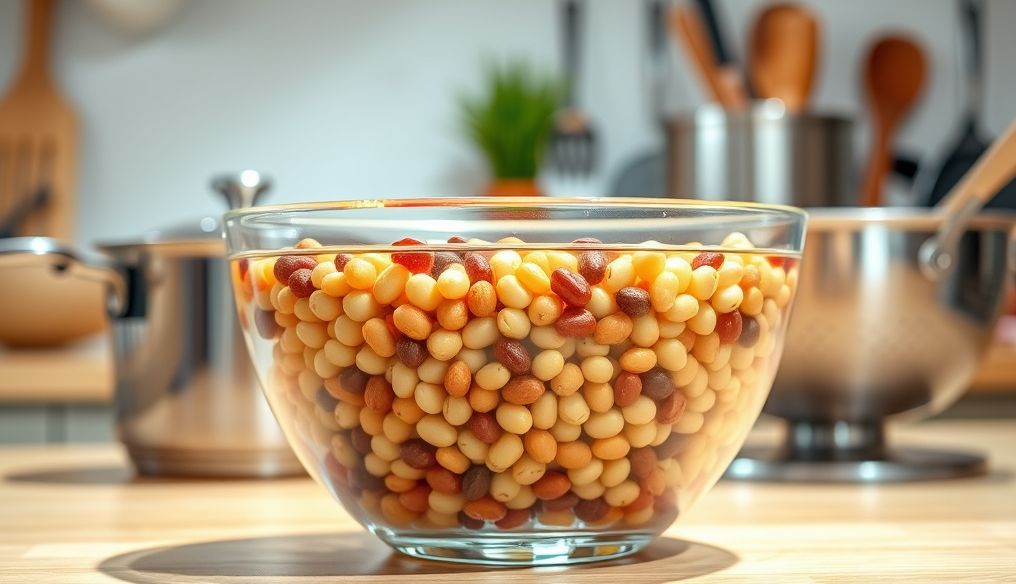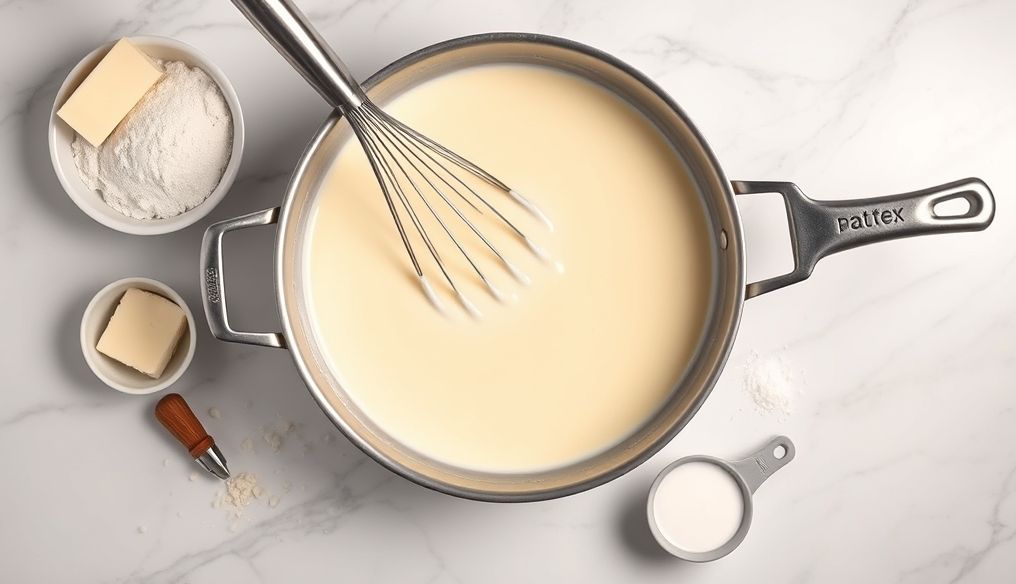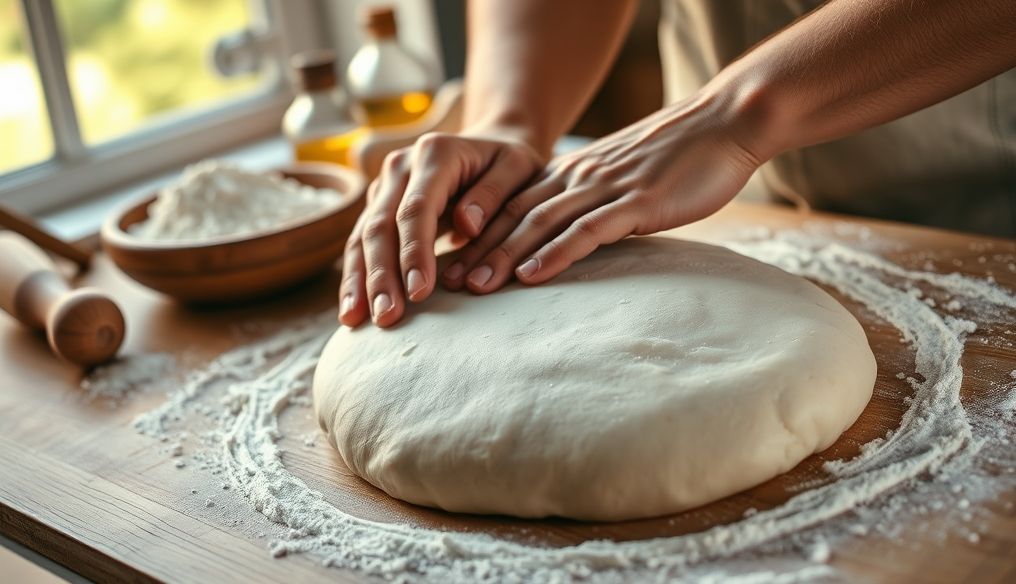Should You Soak Legumes Before Cooking? Benefits and Risks Explained
Legumes, such as beans, lentils, chickpeas, and peas, are an excellent source of protein, fiber, and essential nutrients. However, some people may find them difficult to digest or may experience problems such as bloating and gas after eating them. For this reason, soaking legumes before cooking is a common practice, but is it really necessary?
What is Soaking Legumes and Why Do We Do It?
Soaking legumes is simply the process of immersing dried legumes in water for a certain period, usually from 4 to 24 hours. The purpose of this process is to:
- Reduce Cooking Time: Soaked legumes absorb water, which reduces the time it takes to cook them until they are tender.
- Improve Digestion: Soaking helps break down some of the compounds in legumes that may cause digestive problems.
- Remove Potential Toxins: Some legumes contain natural toxins, such as lectins, which can be reduced by soaking.
Health Benefits of Soaking Legumes
1. Improving Digestion and Reducing Gas
Legumes contain a type of complex sugar called oligosaccharides, which the body finds difficult to digest completely. When these sugars reach the large intestine, they are fed upon by the bacteria present there, producing gas. Soaking helps break down these sugars, reducing the amount of gas produced.
A study published in the "Journal of Agricultural and Food Chemistry" found that soaking beans for 12 hours significantly reduces their oligosaccharide content.
2. Increasing Nutrient Availability
Legumes contain substances called phytates, which can bind to minerals such as iron, zinc, and calcium, preventing the body from absorbing them. Soaking helps break down phytates, increasing the availability of these minerals to the body.
Research suggests that soaking legumes can increase iron absorption by up to 50%.
3. Reducing Lectin Content
Lectins are a type of protein found in legumes and grains, which can interfere with nutrient absorption and cause digestive problems. Soaking, especially with changing the water several times, helps reduce the lectin content in legumes.
4. Improving the Texture and Taste of Legumes
Soaking helps soften legumes, making them easier to cook and more enjoyable to eat. It can also improve their taste by removing some of the natural bitterness present in them.
Do All Legumes Need to Be Soaked?
The short answer is no. Some legumes, such as lentils and split black beans, do not need to be soaked because they cook quickly and easily. However, soaking them can reduce cooking time and improve digestion.
In general, larger and denser legumes, such as fava beans, kidney beans, and chickpeas, benefit most from soaking.
How to Soak Legumes Properly
- Rinse: Rinse the legumes well with cold water to remove any dirt or impurities.
- Soak: Place the legumes in a large bowl and fill it with cold water, so that the water covers the legumes by about 2-3 inches.
- Duration: Soak the legumes for 4-24 hours. Change the water every 8 hours or so.
- Rinse Again: After soaking, rinse the legumes again with cold water.
- Cook: Cook the legumes in clean water until they are tender.
Quick Soak Method
If you are in a hurry, you can use the quick soak method:
- Rinse the legumes well.
- Place the legumes in a pot and fill it with water.
- Boil the water for 2-3 minutes.
- Turn off the heat, cover the pot, and let it sit for an hour.
- Rinse the legumes and cook them as usual.
Potential Risks of Soaking Legumes
Despite its many benefits, soaking legumes may carry some potential risks:
- Loss of Some Nutrients: Legumes can lose some water-soluble vitamins and minerals during soaking. However, the health benefits of soaking outweigh this slight disadvantage.
- Bacterial Contamination: If soaked legumes are not stored properly, they may become susceptible to bacterial contamination. Make sure to change the water regularly and store the soaked legumes in the refrigerator.
Alternatives to Soaking Legumes
If you do not want to soak legumes, you can use other alternatives:
- Canned Legumes: Canned legumes are pre-cooked, so they do not need to be soaked or cooked for a long time. However, they may contain a high amount of sodium, so make sure to rinse them well before using them.
- Pressure Cooker: A pressure cooker can be used to cook legumes quickly and easily without the need for soaking.
Additional Tips for Cooking Legumes
- Add a little salt to the cooking water to improve the taste and speed up the cooking process.
- Avoid adding acids, such as tomatoes or vinegar, at the beginning of cooking, as they can slow down the softening process.
- Taste the legumes while cooking to make sure they are tender enough.
Conclusion
Soaking legumes before cooking is a beneficial practice that can improve digestion, increase nutrient availability, reduce lectin content, and improve the texture and taste of legumes. Although some legumes do not need to be soaked, soaking them can provide many health benefits. Whether you choose to soak legumes or not, be sure to cook them properly and enjoy their many nutritional benefits.
Frequently Asked Questions About Soaking Legumes
Can I soak legumes for longer than 24 hours?
Yes, you can soak legumes for longer than 24 hours, but be sure to change the water regularly to prevent bacterial contamination. Store them in the refrigerator if you intend to soak them for longer.
Can I use the same soaking water to cook the legumes?
No, it is not recommended to use the same soaking water to cook the legumes. The soaking water contains some compounds that have been released from the legumes, which may affect the taste and digestion. Rinse the legumes well and use clean water for cooking.
What is the best way to store soaked legumes?
Store the soaked legumes in the refrigerator in an airtight container. Change the water regularly to prevent bacterial contamination.




